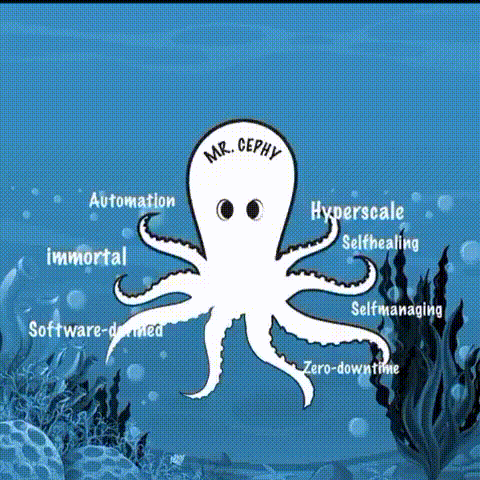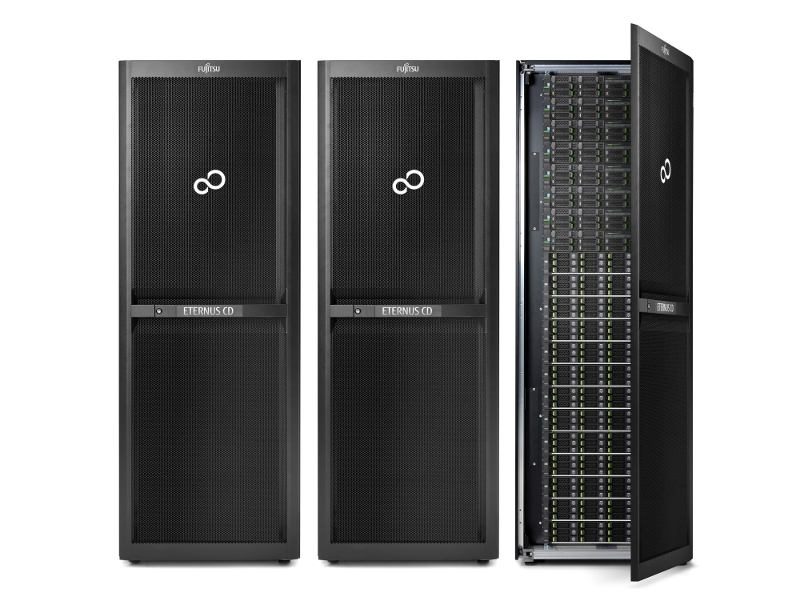Fujitsu ETERNUS CD10000 S2: what's new?

About a year ago, we talked about the Fujitsu ETERNUS CD10000 - a ready-made solution prepared by our company for the rapid deployment of a horizontally scalable software-defined storage system based on open Ceph software and Fujitsu PRIMERGY rack-mount servers. ETERNUS CD10000 scales from four to 224 storage nodes and 50 PB capacity. On October 1 of this year, the second generation ETERNUS CD10000 S2 came out, which implemented a number of important improvements. What kind?
First of all, in order to reduce storage costs as the data volumes grow exponentially, two new storage nodes CD10000 were released, with which you can achieve an optimal balance of costs, capacity and performance (recall that in the first generation there were three storage node models - Basic, Performance and Capacity).
The Flex Node node based on the PRIMERGY 2540 M1 dual-node server allows you to flexibly scale capacity and performance by adding storage nodes to the CD10000, each of which can have one to three ETERNUS JX40 S2 expansion disk shelves. In the basic configuration, the Flex Node is equipped with disks with a total capacity of up to 44 TB, and at the maximum (with three expansion shelves) its capacity increases to 188 TB. Also, in the Flex Node storage node, as an option, you can install two 800-gigabyte solid-state drives in a PCI Express form factor.
')
Using the Intel Atom C2000 processor, the 12-disk Density Node node occupies a 1U rack, while providing storage of 60 TB of capacity. This high density node allows you to place in the same standard rack more than two petabytes of disk capacity, which makes it possible to make the most efficient use of the data center space where the ETERNUS CD10000 S2 is installed. The Density Node nodes increase the density of capacitance tenfold and reduce the power consumption of the CD10000 up to two times.
It is also worth emphasizing that the already installed ETERNUS CD10000 can be used to connect new nodes online and gradually decommission the first-generation nodes, which significantly increases the storage system's lifespan — if for a regular disk RAID array it is about five years, then for ETERNUS CD10000 life cycle is 10-15 years.

For more economical use of disk capacity, Fujitsu engineers in the framework of the Ceph open source software project have developed the Erasure Code technology, which saves the disk space required to store backup duplicates of data through the use of parity codes. When using Erasure Code for storage with double redundancy, the ETERNUS CD10000 S2's need for excess capacity is only half of the data volume instead of twice the excess capacity in a standard software-defined storage system based on Ceph.
In ETERNUS CD10000 S2 implemented additional means to ensure disaster-proof storage. In a standard Ceph cluster, you can combine nodes located on two or more sites, but the use of such a geographically distributed cluster introduces significant delays in data access due to waiting for the copy to complete at a remote node. In the new generation of the horizontal-scalable system CD10000, a disaster-relief function has appeared, implemented using two clusters, the data of which is asynchronously synchronized using Gateway Node gateways. This separation of clusters means that the performance of one cluster does not affect another cluster, and when requesting data, the Read Affinity function redirects it to the closest copy of the data to speed up the read speed.

Disaster-resistant configuration of the ETERNUS CD10000 S2 of two clusters
Also within the cluster, you can now back up a pool of disk resources (including incremental and synthetic) using the Backup-in-Box function, and you can restore a pool or its individual objects to another pool, for example, if the storage node where the original pool failed.
In the year after the release of the first generation ETERNUS CD10000, considerable experience was gained in using this solution with customers, on the basis of which Fujitsu developed tested configurations for the rapid implementation of software-defined storage for building the PRIMEFLEX OpenStack cloud, synchronization and sharing data in enterprise-wide, creating online archives and content repositories, backing up to the cloud. The new generation of Fujitsu ETERNUS CD10000 improves the flexibility and density of software-defined storage, provides savings in storage capacity for duplicate data and expands the possibilities of disaster-resistant storage.
Source: https://habr.com/ru/post/269607/
All Articles